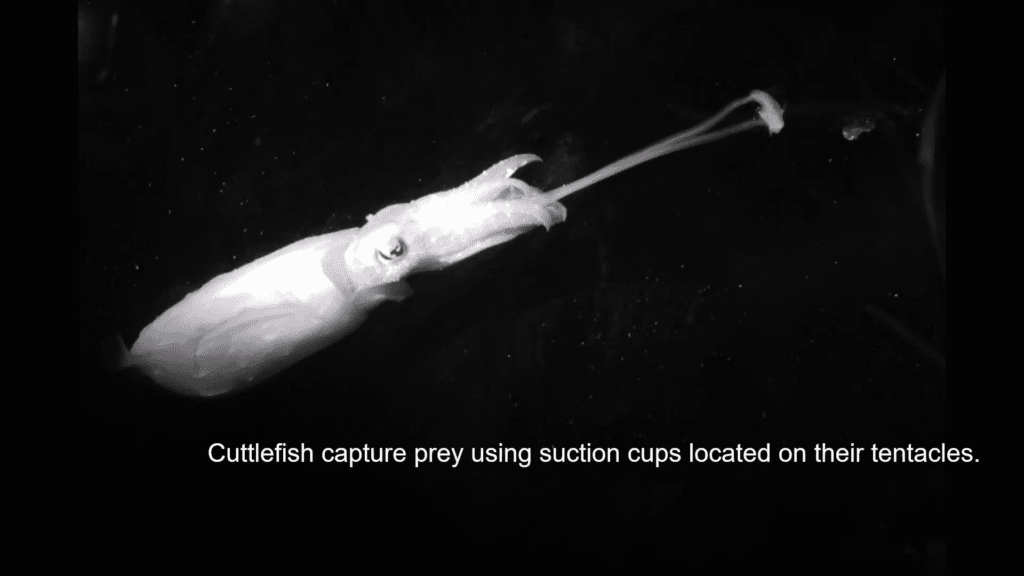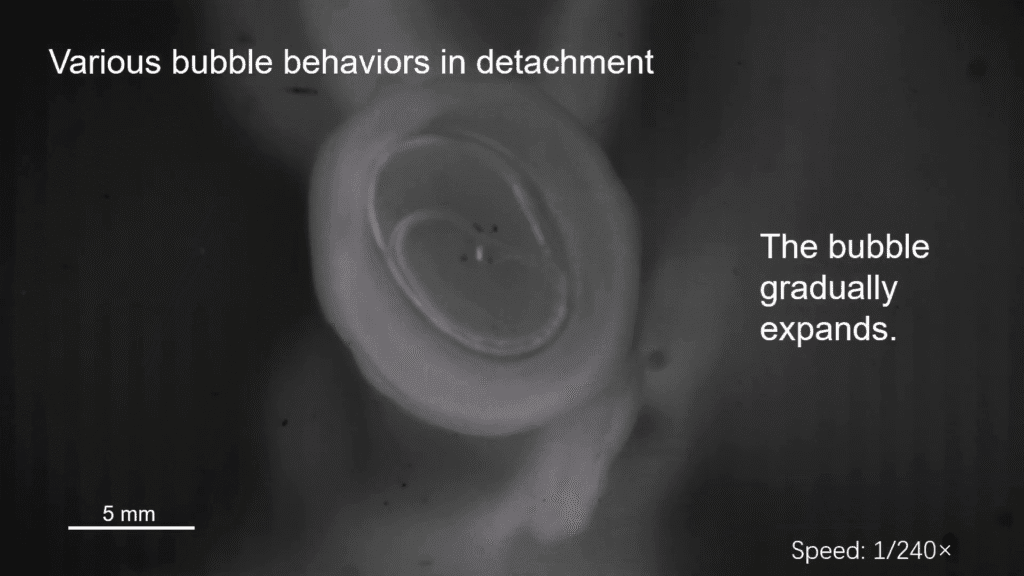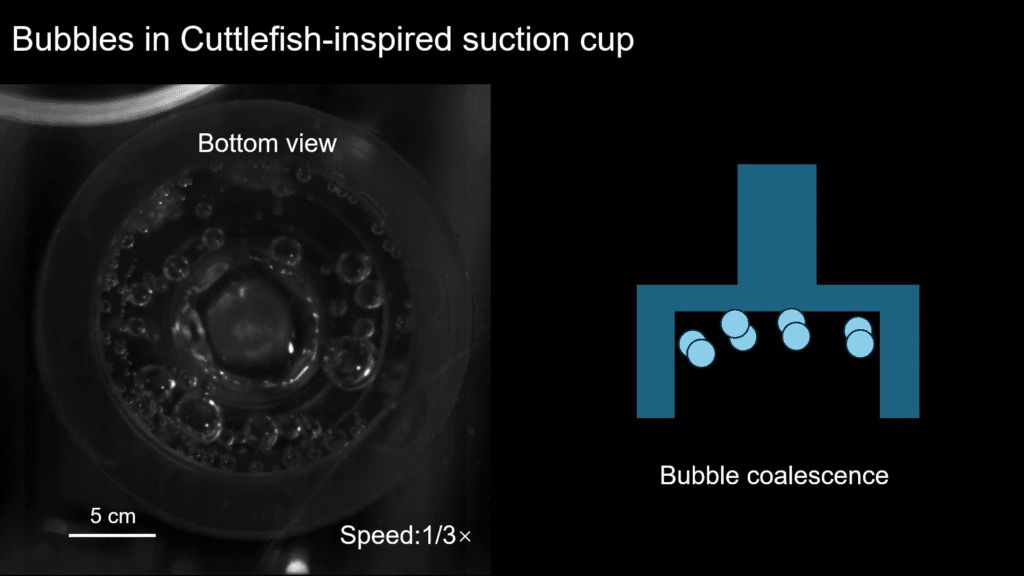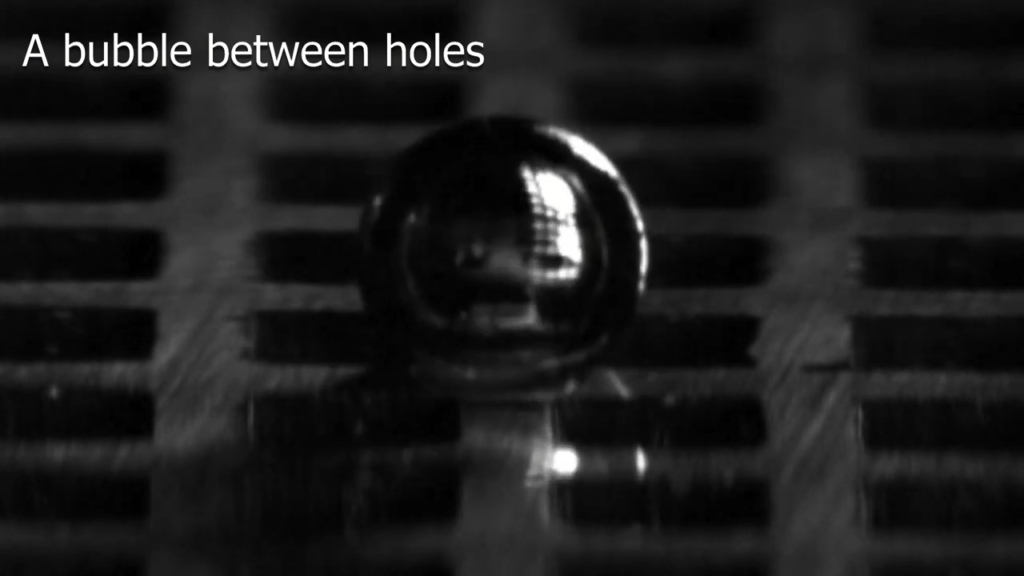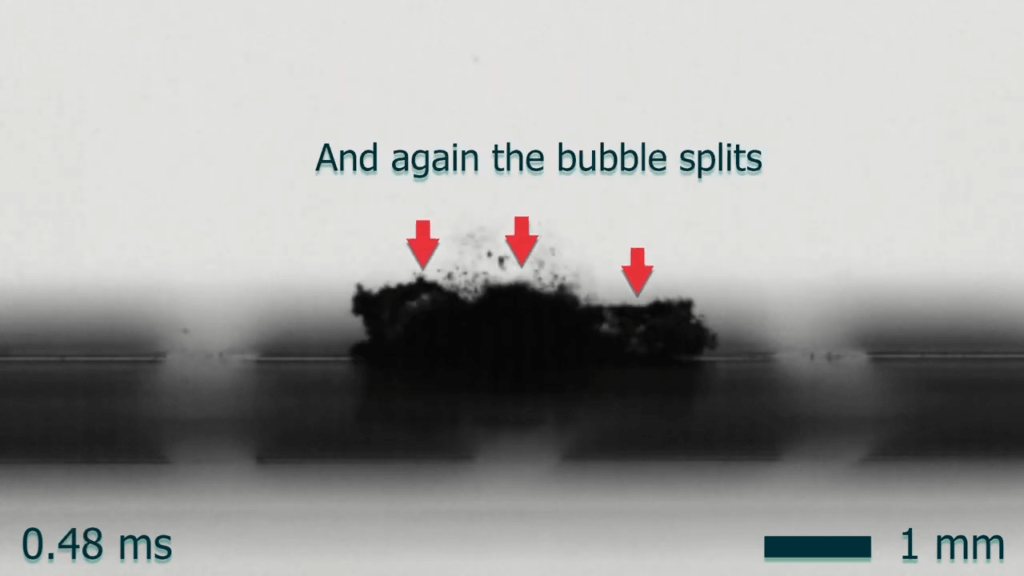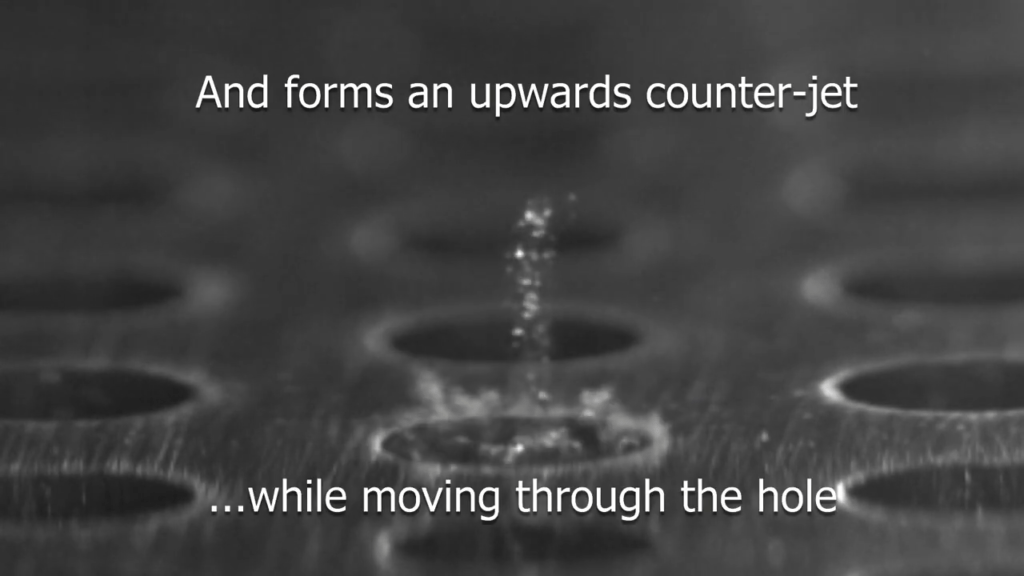Cuttlefish, like many cephalopods, catch prey with their tentacles. Suction cups along the tentacle help them hold on. In this video, researchers share preliminary studies of what goes on inside these suction cups as they’re detached. The low pressures inside the suction cup cause water to vaporize, temporarily. As seen for both the cuttlefish and a bio-inspired suction cup, small bubbles form inside the attached cup, coalesce into larger bubbles, and then get destroyed in the catastrophic leak that occurs once part of the suction cup detaches. (Video and image credit: B. Zhang et al.)
Tag: bubble collapse

Collapsing Cavitation Bubbles
Cavitation bubbles live short, violent lives. Triggered here with a laser, these bubbles rapidly expand and then collapse, sending out shock waves. In this video, researchers explore how bubbles collapse when they’re near a plate with holes in it. For bubbles sitting between holes, collapse becomes asymmetric, eventually splitting the bubble into two as it falls in on itself. Bubbles centered over a hole perform a disappearing act, sucking themselves down into the hole during collapse. (Image and video credit: E. Andrews et al.)

Foam Collapse
Introduce the right additive and the bubble arrays in foam will collapse catastrophically. What you see above is high-speed video of a quasi-two-dimensional soap bubble foam collapsing. There are two main mechanisms in the collapse. The first is a propagating mode. When one section of the film breaks, a stream of liquid from the broken film can impact an adjacent section, causing it to break as well. This accounts for much of the breakage you see above.
The second mode is through penetration by droplets. Watch carefully, and you’ll see that some of the breaking films generate tiny droplets which can fly through the wall of the next cell and impact against the far side. With the right conditions, that impact can trigger a new break along a non-adjacent film. Together, these two mechanisms can destroy foam in the blink of an eye. (Image and research credit: N. Yanagisawa and R. Kurita)

